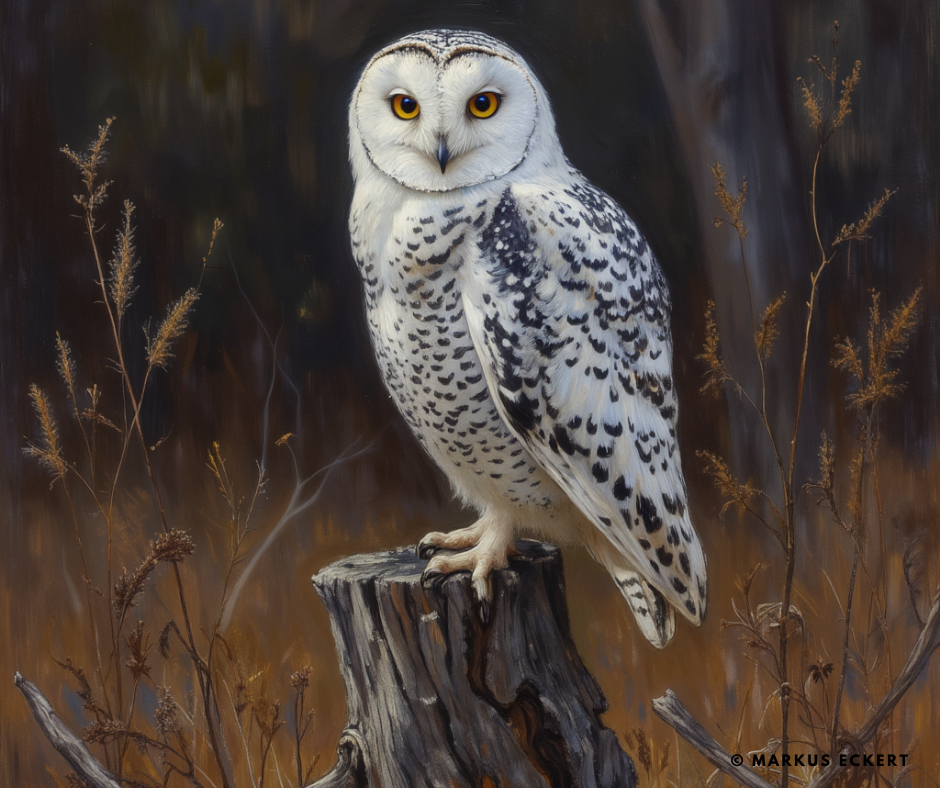
Snowy Owl

The Beauty of Lapland’s Four Seasons and the Majestic Snowy Owl
Lapland’s breathtaking nature enchants visitors throughout the year, as the changing seasons continuously transform the landscape into new and stunning scenes. The clear, bright light of spring awakens the fells from their winter slumber, while the midnight sun of summer bathes the region in endless daylight. Autumn paints the forests and tundra with vibrant hues of red and gold, and winter wraps the wilderness in a peaceful blanket of snow.
Amidst this spectacular natural cycle lives one of Lapland’s most remarkable and rare inhabitants: the Snowy Owl (Bubo scandiacus). Nearly as large as the Eurasian Eagle Owl, the Snowy Owl stands out with its strikingly pale plumage. Adult males are almost entirely white, while females and juveniles display varying amounts of dark markings that provide camouflage in the tundra environment.
This impressive owl measures between 53 and 65 centimeters in length, with a wingspan ranging from 125 to 150 centimeters. Males typically weigh between 1.3 and 2.3 kilograms, while females are slightly heavier, ranging from 1.7 to 3 kilograms. The Snowy Owl’s legs are fully feathered, and its dark claws and beak contrast vividly with its bright yellow eyes.
The breeding season occurs from April to May, during which the Snowy Owl nests in a broad depression on a gravelly mound that offers clear visibility of the surroundings. The female lays between 5 and 12 eggs, occasionally up to 14, and incubates them for 30 to 38 days. The size of the brood largely depends on food availability. Chicks remain in the nest for 12 to 20 days, start learning to fly around 30 days old, and achieve full flight capability by approximately 50 days.
In Finland, the Snowy Owl breeds only occasionally in the northernmost fell areas of Lapland. Successful breeding is closely linked to the abundance of lemmings and other small mammals, which form its primary diet. When prey populations decline sharply, individual owls may wander far south, reaching as far as southern Finland, the Baltic region, and even Central Europe in search of food.
The Snowy Owl’s migration patterns are closely tied to fluctuations in Arctic small mammal populations, with movements occurring eastwards or westwards across the circumpolar Arctic regions worldwide.
Despite its majestic presence, the Snowy Owl is classified as critically endangered in Finland—one of the country’s 13 most threatened bird species. The European breeding population is estimated at only a few thousand pairs, and its conservation status on the European Red List is vulnerable, a concern that is reflected globally.
Lapland’s ever-changing seasons and pristine wilderness offer unforgettable experiences for travelers, with the Snowy Owl standing as a symbol of the fragile and extraordinary Arctic ecosystem. Its almost pure white feathers and piercing yellow eyes are like something from a fairy tale, reminding us of the unique and delicate nature of Finland’s far north.
For those seeking to connect with Lapland’s wild beauty, witnessing the Snowy Owl in its natural habitat is a rare and treasured encounter—one that highlights the profound splendor and resilience of this northern wilderness throughout the year.
📍 Published by Finland App

